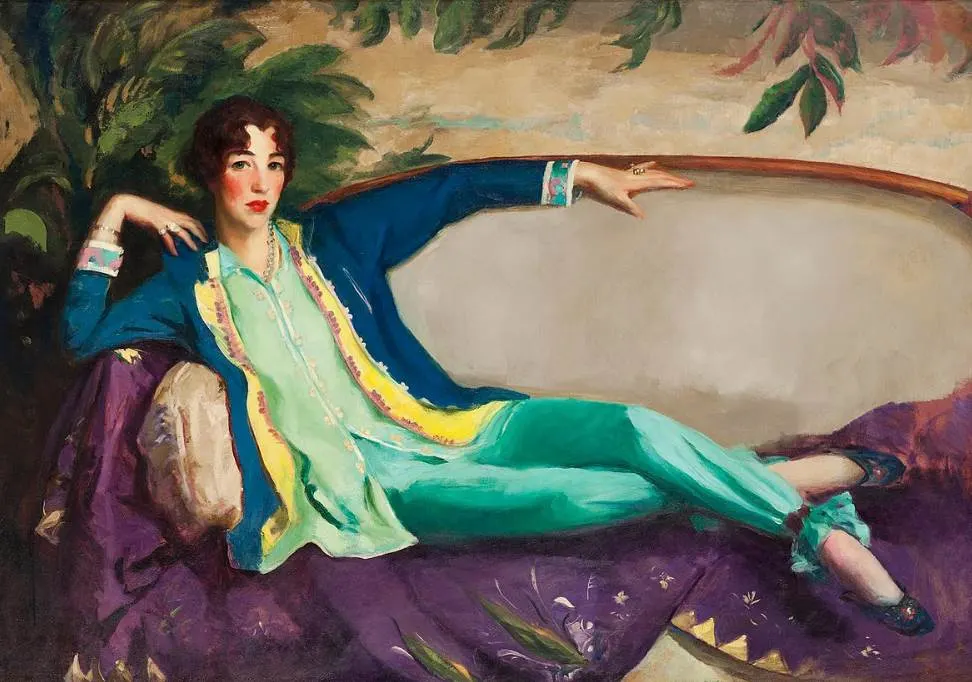The Whitney Museum or “Whitney Museum of American Art,” commonly known as “The Whitney,” is one of the most popular museums in New York City.
It was named in honor of the museum’s founder Gertrude Vanderbilt Whitney (1875-1942), an American artist and art collector.
She started her collection in 1905 and became an important patron for other American artists in the first half of the 20th century.
She ran an art gallery named the Whitney Studio in New York between 1914 and 1928 and this played a major role in the careers of many aspiring American artists.
When both the MET Museum and MoMA in the city declined her donation of about 500 paintings in her collection, she decided to set up her own museum dedicated to American art in 1929.
The museum moved several times throughout its history. It started in a humble building in Greenwich Village before moving to a small building behind the Museum of Modern Art in 1954.
It moved to a much bigger building on Madison Avenue in 1966 and 2010. The Whitney moved to its amazing new home in the Meatpacking District and West Village districts of New York at 99 Gansevoort Street in a building designed by renowned architect Renzo Piano.
In this article, you’ll discover some of the most amazing artworks on display at the Whitney Museum in New York City.
1. Early Sunday Morning – Edward Hopper
- Date created: 1930
- Dimensions: 89.4 × 153 centimeters (35.2 x 60 inches)
Early Sunday Morning is a painting by American Realism artist Edward Hopper (1882-1967). Hopper produced some of the most iconic Realism paintings in American history, including Chop Suey (1929) and Nighthawks (1942).

The painting by Edward Hopper depicts a long red building on Seventh Avenue in New York City. It’s a scene that takes place shortly after sunrise, but that’s not the only reason why the street looks deserted. It’s believed that Hopper attempted to produce an allegory of the situation shortly after the Wall Street Crash of 1929.
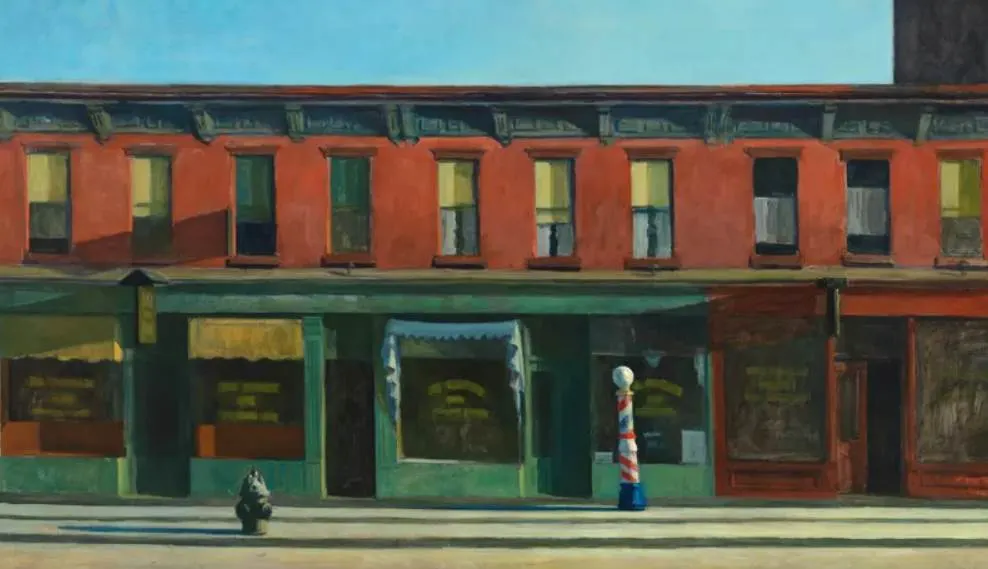
2. Armistice Night – George Luks
- Date created: 1918
- Dimensions: 94 × 173.7 centimeters (37 × 68.37 inches)
Armistice Night is a painting by George Luks that was produced shortly after the conclusion of World War I. As you surely expected, it depicts one of the many abundant celebrations at the end of the 4-year-long war and the artists managed to capture the scene magnificently.
The hazy view of the celebration is the typical characteristic of Luk’s painting in which he aimed to capture the entire moment instead of focusing on details. American and Allied flags are being waved together and blue smoke makes the entire composition rather obscure.
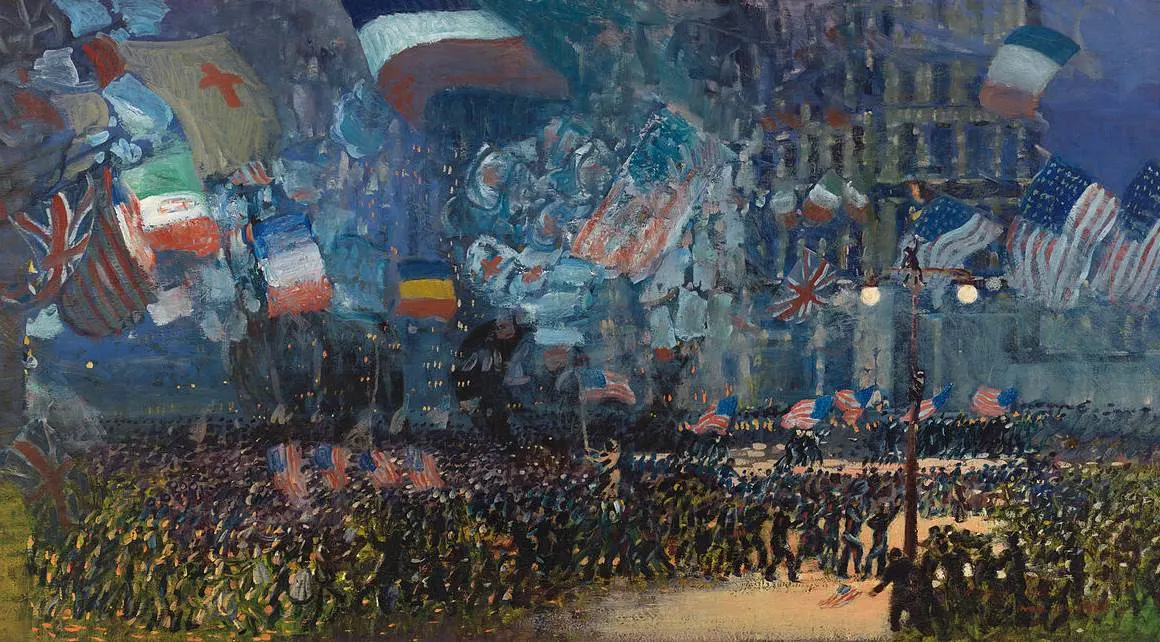
3. Woman and Bicycle – Willem de Kooning
- Date created: 1952-1953
- Dimensions: 194.3 × 124.8 centimeters (76.5 × 49.12 inches)
Woman and Bicycle is a remarkable painting by Dutch-born artist Willem de Kooning (1904-1997), a man who moved to the United States in 1926. He spent most of his adult life in the country and became one of the leading Abstract Expressionist artists of the 20th century.
Abstract Expressionist paintings usually don’t feature shapes and forms that can be distinguished, but the “Woman series that Willem de Kooning produced between 1950 and 1953 at the height of the movement is slightly different. A Standing woman can clearly be distinguished in this peculiar artwork at the Whitney.
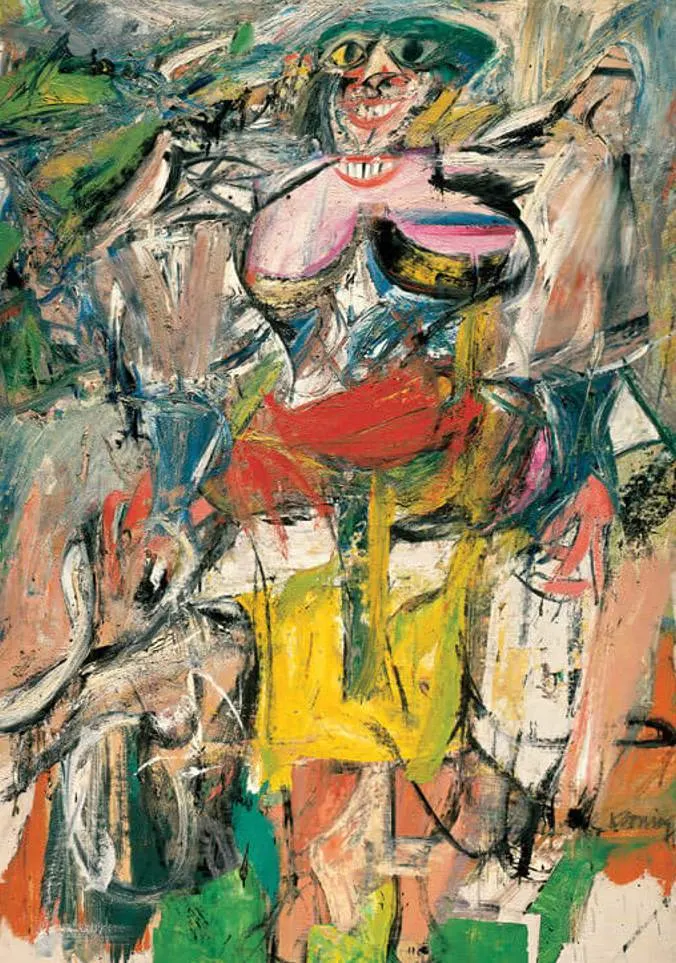
4. My Egypt – Charles Demuth
- Date created: 1927
- Dimensions: 91.3 × 76.2 centimeters (35.9 × 30 inches)
My Egypt is a painting by Charles Demuth (1883-1935), an American artist who started his career producing watercolors but eventually picked up oil painting as well. It depicts a grain elevator in the artist’s hometown of Lancaster, Pennsylvania.
The monumental grain elevator is believed to be an analogy to the Great Pyramid of Giza in Egypt, the reason why it was given this title. It’s referred to as one of the most important works of the Precisionist art movement, a movement that emerged in the United States after World War I and that was influenced by Cubist paintings.
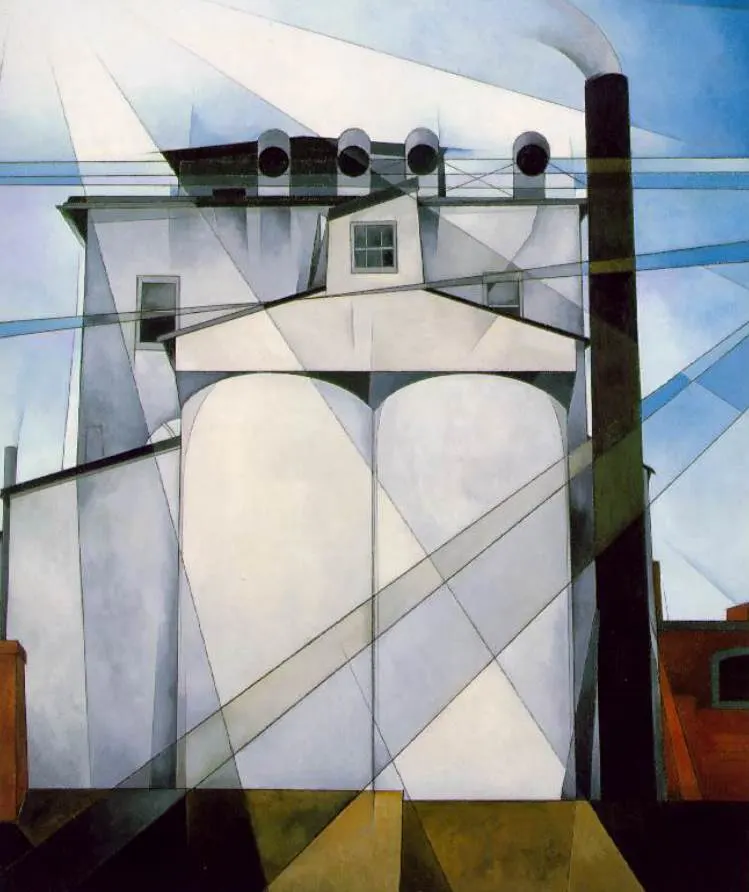
5. The Brooklyn Bridge: Variation on an Old Theme – Joseph Stella
- Date created: 1939
- Dimensions: 178.4 × 107.2 centimeters (70.25 × 42.18 inches)
The Brooklyn Bridge: Variation on an Old Theme, is a painting by the Italian-born American artist Joseph Stella, a man who emigrated to the United States at the age of 19. He had always been fascinated by the Brooklyn Bridge and often used it as a subject after he first painted it in 1918.
This remarkable work of art was included by Italian Futurism and aims to capture the immense dimension of this monumental bridge in New York City. The cables, the masonry, and the buildings in the background of the painting make this one of Stella’s ultimate masterpieces.
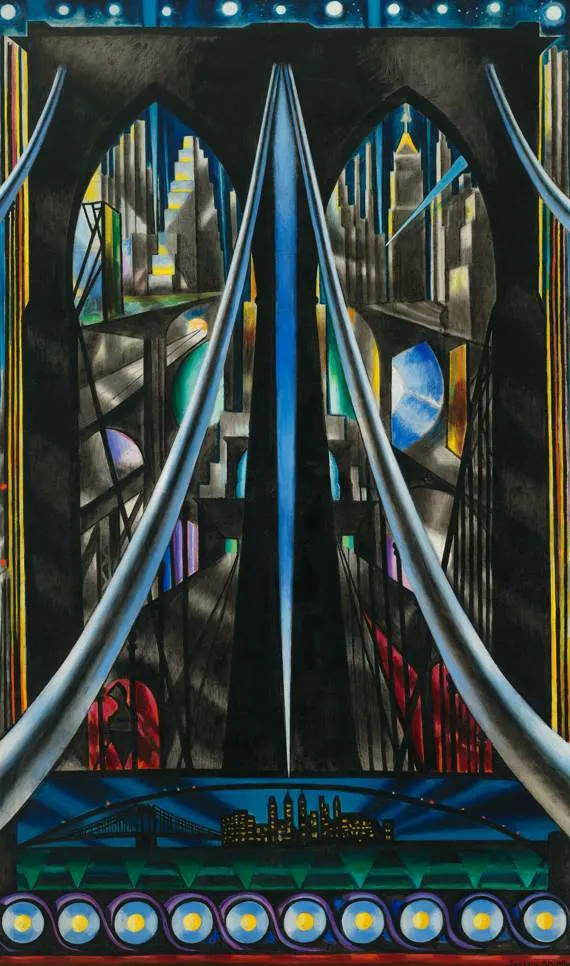
6. Dempsey and Firpo – George Bellows
- Date created: 1924
- Dimensions: 129.5 x 160.6 centimeters (51 x 63.2 inches)
Dempsey and Firpo is a painting by George Bellows (1882-1925) that is also sometimes referred to as “Dempsey Through The Ropes.” That’s mainly because it depicts the moment that American boxer Jack Dempsey (1895-1983) is knocked out of the rin by Argentine boxer Luis Firpo (1894-1960).
The scene is remarkable because Jack Dempsey actually won that match this night. It’s one of several boxing-related paintings by Bellows and it can easily be described as his most famous one. The artist included himself in this work as well as the balding man on the utmost left is a self-portrait.

7. Painting, Number 5 – Marsden Hartley
- Date created: 1914-1915
- Dimensions: 99.7 × 81.3 centimeters (39.25 x 32 inches)
Painting, Number 5 is an artwork by Marsden Hartley, an American modernist painter. He painted this work while he was staying in Berlin at the start of World War I. We can clearly see the German Nationalistic symbols in this work.
It’s one of several paintings by the artist related to the war, an event that Hartley found absolutely devastating. The painting was influenced by Cubism but also shows traces of German Expressionism, a movement that had only emerged shortly before the war started.

8. The Subway – George Tooker
- Date created: 1950
- Dimensions: 47 × 92.7 centimeters (18.5 x 36.5 inches)
The Subway is a famous painting by American artist George Tooker (1920-2011), a man who often depicted social realism subjects. This painting depicts anxiety-ridden figures in a subway setting. The artist used multiple vanishing points so he could squeeze in as many figures as possible.
The main motif of the artist was to depict the isolation that people felt in large cities during the post-war era. None of the figures appear to be related to each other nor do they interact. Tooker described the subway as the perfect place to paint this type of subject.
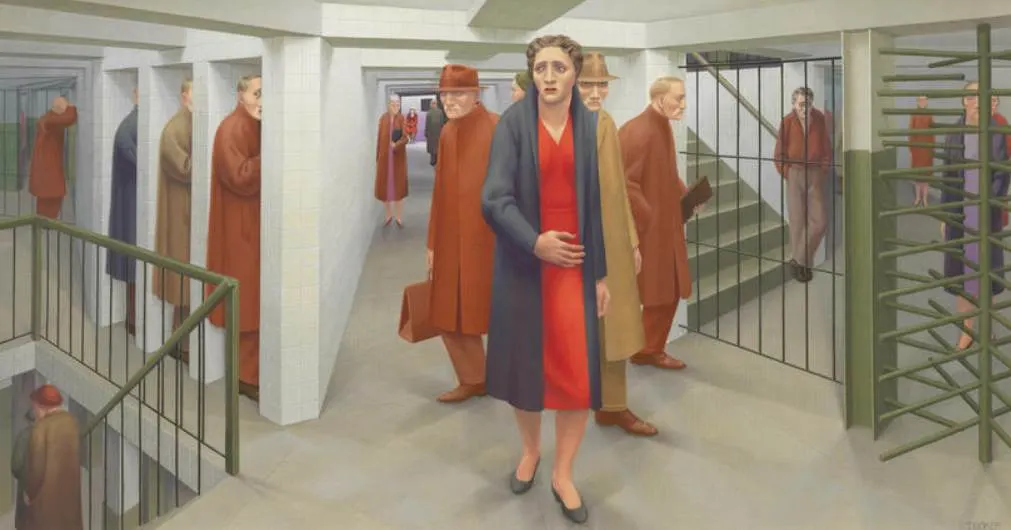
9. New York Interior – Edward Hopper
- Date created: 1921
- Dimensions: 61.8 × 74.6 centimeters (24.31 × 29.37 inches)
New York Interior is another painting by American Realist painter Edward Hopper. It depicts a common scene inside a New York Apartment as seen from the building’s window. The intimate view, yet the distance between the viewer and the subject represents the remarkable life in urban settings.
The voyeuristic view of a woman sewing is one of many paintings by Hopper that depict indoor scenes, a subject that he was fascinated with. The clothing worn by the sewing woman resembles the Ballet Dancers depicted by French Impressionist artists. These were artworks Hopper admired.
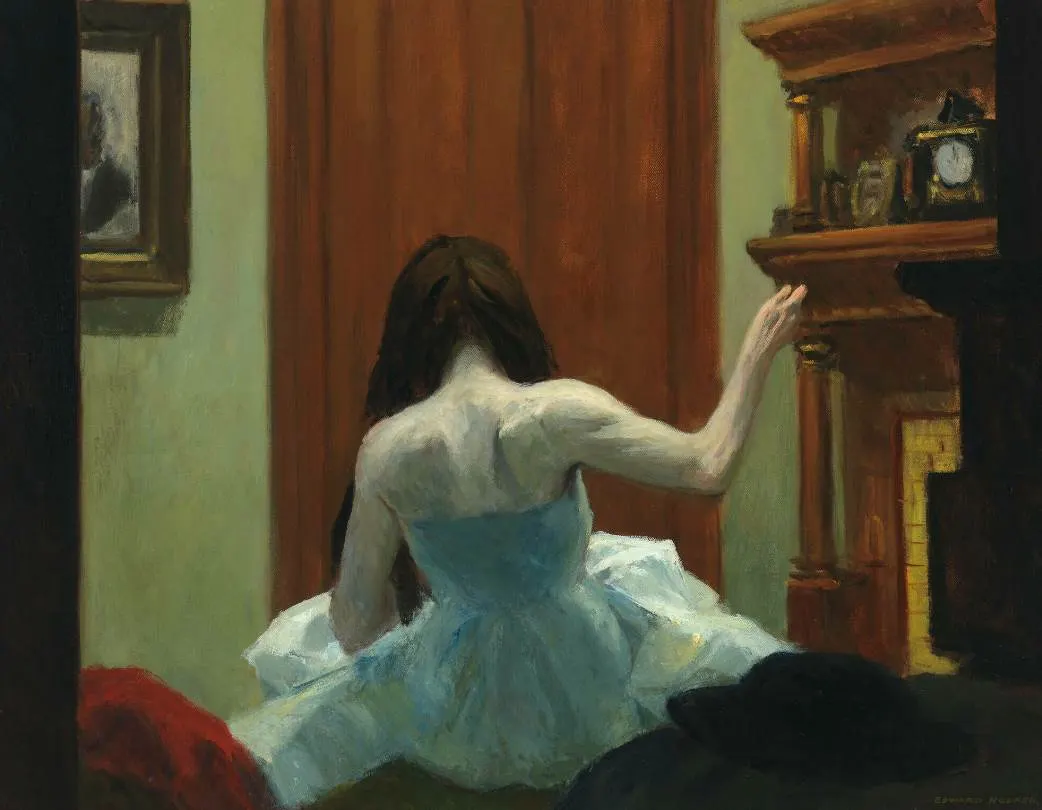
10. Gertrude Vanderbilt Whitney – Robert Henri
- Date created: 1916
- Dimensions:
Gertrude Vanderbilt Whitney was depicted at her request by Robert Henri, one of the leading urban Realist painters at the time. She was the founder of The Whitney Museum and a great patron of the arts in the United States.
By the time this work was completed, she already managed the Whitney Studio in Greenwich Village. This painting depicts Whitney in a reclining position which was quite unusual at the time. It resembles the position of Renaissance paintings featuring nude females but depicts a modern woman in the early 20th century.
